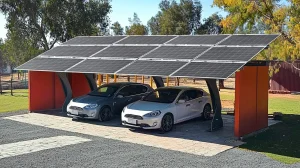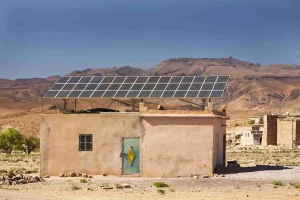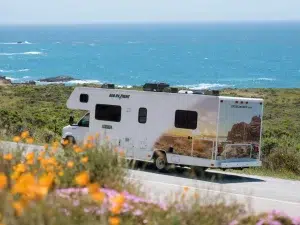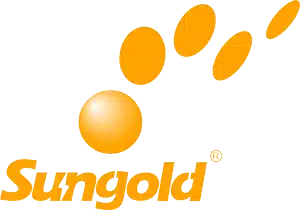Photovoltaic panels that are thin and bendy, these flexible solar panels pop up on everything from camper-van roofs to emergency roll-out chargers. This is all promise and no weight—or bulk, which is a tall order for a monofilm framed module.
The following sections cut through the hype to compare flexible, rigid and thin-film options, helping you determine when bendable panels are a good fit and when glass still reigns supreme.
What Makes a Solar Panel “Flexible”?
Conventional crystalline-silicon modules sandwich 200 µm solar cells between sheets of tempered glass inside an aluminum frame. Flexible panels slice those cells down to just a few microns, then laminate them in an ETFE polymer skin over a 0.8 mm FRP core. Three key characteristics follow:
Bendability ≤ 30 ° (≈ 1 m radius) without micro-cracks
Lightweight: only 2.51 kg for a 100 W module
Ultra-thin size: 1 235 × 470 × 3 mm—slips under roof racks or sail-boat biminis
Note: ETFE offers 97 % light transmission and resists UV yellowing, giving it roughly twice the service life of PET-laminated competitors.
Quick Verdict: When They Shine & When They Don’t
| Flexible Panels Shine | Because … |
|---|---|
| RV & van roofs, sailboats, tent canopies | 60 – 70 % lighter; stick-on install—no holes, no racking |
| Curved Airstream or metal roofs | Conform up to 30 °, preserving aerodynamics |
| Walk-on catamaran decks | Textured ETFE tolerates ≈ 100 kg point load |
| Rapid-deploy emergency kits | Rollable mats store under 2 kg; no glass to shatter |
| Not Their Best Arena | Why Not |
|---|---|
| Standard pitched house roofs | 10 – 25 % lower efficiency → poorer ROI |
| 20-year grid-tie PPAs | Typical warranties top out at 8 years |
| Heavy snow & hail zones | No frame → lower mechanical strength |

Pros: Lightweight, Bendable, Walk-On Ready
Super-light: a 100 W flexible module weighs just 2.51 kg—about 63 % less than a framed 100 W glass panel.
Rack-free install: VHB tape or Sikaflex adhesive replaces aluminum mounting, cutting BOS costs ~20 %.
Ultra-slim: < 3 mm height reduces wind lift and keeps RV height legal.
Walkable surface: ETFE top layer resists foot traffic and salt fog.
Self-cleaning: the hydrophobic ETFE skin sheds dust and bird droppings to maintain output.
Cons: 10 – 25 % Lower Efficiency & 3 – 10 Year Lifespan
Efficiency gap – Module efficiency 15–17 % vs. 20 %+ for rigid mono panels.
Heat buildup – No rear air gap means cell temps run ~15 °C hotter; voltage drops ~5 %.
UV & moisture fatigue – PET clouds in 3–5 years; ETFE lasts ~10 years yet still trails 25-year glass warranties.
Micro-cracks – Road vibration stresses busbars; IBC/HPBC cells with copper backing mitigate the risk.
Best-Fit Scenarios
RV & Van-Life
Adhesive mounting means zero roof leaks, cuts 20–30 kg off rooftop weight, and pairs neatly with an MPPT 100/15 controller on 12 V house batteries.
Sailboats & Catamarans
Panels hug curved coach-roofs; FRP cores resist torsion. Enjoy silent charging at anchor—no diesel genset required.
Emergency Kits & Portable Power
Sub-1 kg roll-out mats recharge power stations during grid outages—no fragile glass to shatter in transit.
Flexible vs Rigid vs Thin-Film (100 W Samples)
| Spec | Flexible Mono (ETFE) | Rigid Mono (Glass) | CIGS Thin-Film |
|---|---|---|---|
| Weight | 2.51 kg | 6.7 kg | 2.8 kg |
| Thickness | 3 mm | 30 mm | < 2 mm |
| Module efficiency | 17.2 % | 22.7 % | 11–14 % |
| Bendability | ≤ 30 ° | — | Rollable |
| Warranty | 8 yr product / 20 yr life | 10 yr product / 25 yr life | 10 yr |
Rigid-panel data sourced from the Sungold SGM2-100W datasheet.
Sungold Anti-Shading Series — How We Tackle Hot-Spots
Multi-branch matrix – Six parallel substrings limit shade loss to 17 % instead of 100 %.
Integrated bypass diodes – Current detours around bird droppings or deck cleats.
FRP + ETFE laminate – 0.8-mm FRP core resists torsion; ETFE counters UV and salt fog.
Robotic lamination – 155 °C fusion abolishes air pockets, cutting hot-spot risk.
Marine-grade edge seal – Passes 1 000-hr ASTM B117 salt-spray testing.
Result: ≤ 2 % annual degradation and an 8-year product warranty—twice the industry norm for flexible panels.
Takeaways & Next Steps
Match tech to task – RVs, boats, curved surfaces ➜ flexible; residential rooftops ➜ rigid glass.
Materials matter – ETFE skins, FRP cores and multi-branch circuitry pay long-term dividends.
Do the math – Factor shorter warranties and a 10–25 % efficiency gap into payback calculations.
Explore Sungold – Our Anti-Shading Flexible Series pairs hot-spot immunity with marine-grade ruggedness.
Keep learning – Read our Rigid vs Flexible Guide and an RV Solar Install Case Study.







